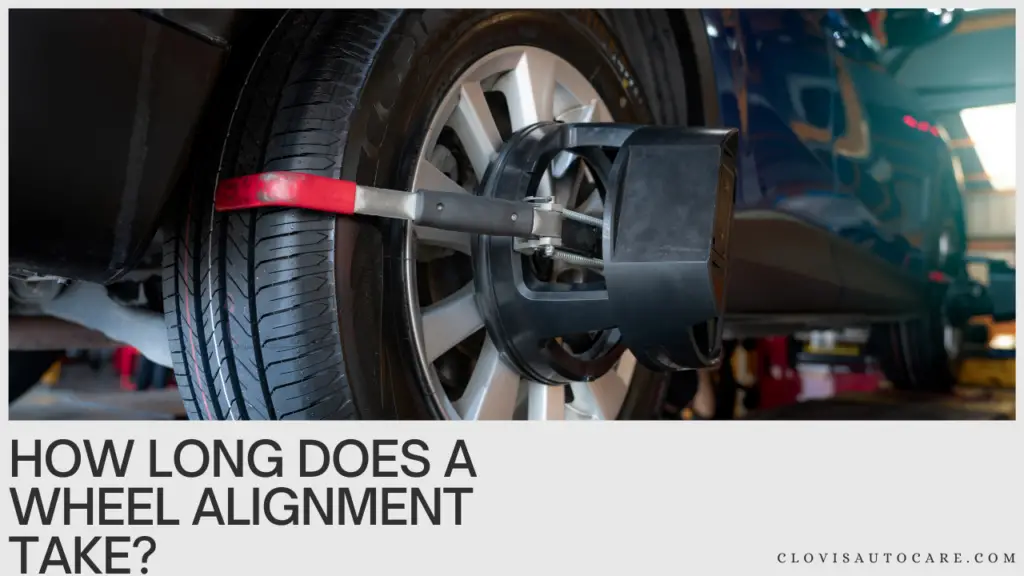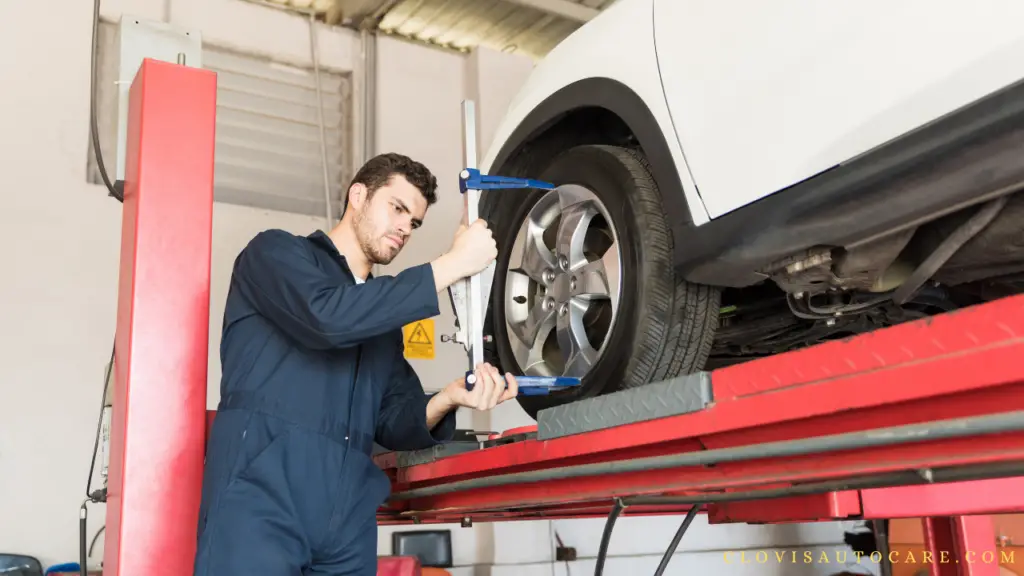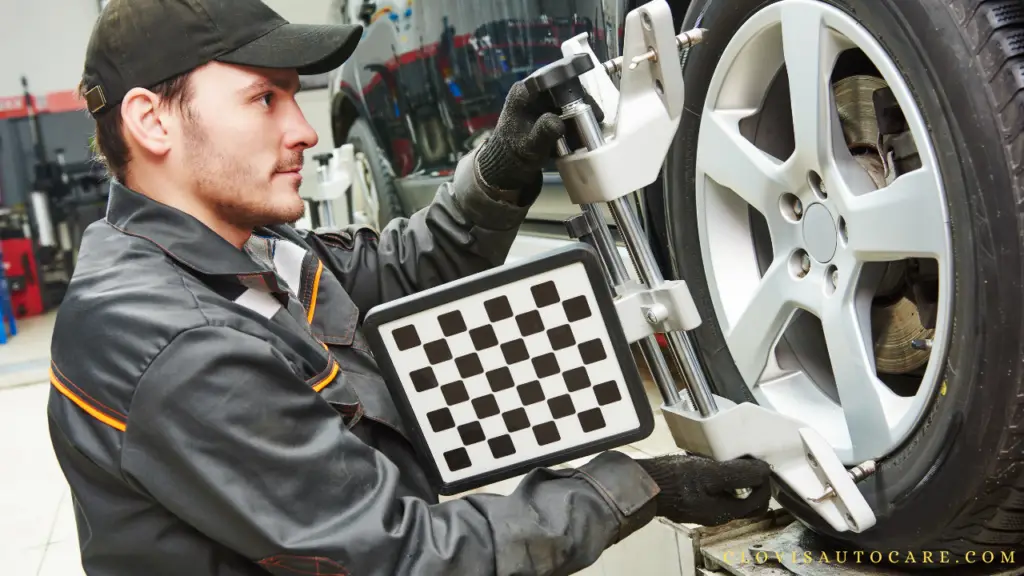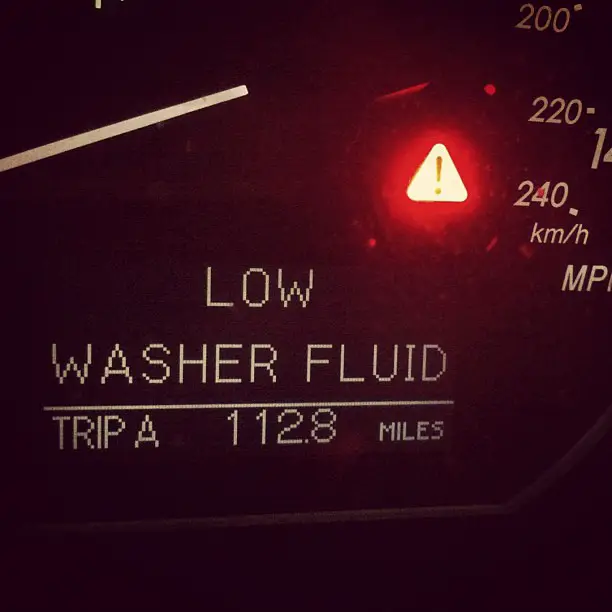Did you know that a wheel alignment, which ensures the correct angle of your rear wheels, can be completed in as little as 30 minutes? but wait! How long does a wheel alignment take? read on
This simple maintenance task can greatly extend tire life and maximize the benefits of new tires. That’s right! Getting your car’s tire alignment checked regularly is important for maintaining a smooth ride and prolonging the lifespan of your new tires.
Proper alignment can also help prevent negative camber issues, ensuring optimal performance and safety for your vehicle.
Contents
By adjusting the angles of your car’s wheels, such as the steering and camber, wheel alignment, also called tracking, helps improve fuel efficiency by reducing rolling resistance.
It also enhances cornering ability, extends tire life, and provides a smoother ride. It also promotes even tread wear, extending the lifespan of your tires and ensuring optimal performance for your cars.
This is especially important for the wheel assembly, as it affects both the front and rear wheels.
By maintaining balanced and aligned wheel assemblies together with regular tire rotation, you can prevent premature tire wear and maximize the longevity of your tires.
So, if you’re looking to optimize your car’s performance and save money on fuel and tire replacements, look no further than a quick and efficient wheel alignment session.
Wheel alignment ensures that your car’s camber, correct angle, and steering components are all properly adjusted.

How long does a wheel alignment take?
An alignment typically takes around 30 minutes to an hour to complete, but the exact duration can vary based on factors like the type of alignment (2-wheel or 4-wheel) and the technician’s efficiency.
Importance of Wheel Alignments
Regular wheel alignments are crucial for maintaining the longevity of your tires and saving money in the long run.
This procedure ensures that the steering components are properly aligned, preventing excessive wear and tear on your tires.
It also helps to maintain the correct camber, which improves handling and tire performance.
Don’t underestimate the importance of regular wheel alignments; they can save you money and extend the life of your tires.
When you experience alignment problems with your wheels, it can result in uneven tire wear.
It is important to regularly perform an alignment check to ensure proper camber and avoid these issues.
This means that certain areas of the wheel assembly and wheel assembly tire will wear down faster than others, leading to premature tire replacement.
Additionally, improper camber can also contribute to uneven tire wear. By getting regular alignments, you ensure that your wheel assemblies and camber are properly adjusted, maximizing the lifespan of your tires and avoiding unnecessary expenses.
Enhance Vehicle Handling and Stability
Proper wheel alignment, including camber, is essential for optimal vehicle handling and stability.
When your tire alignment is correct, the camber of your wheels works together in harmony to keep your vehicle on track.
Tire alignment, specifically camber, helps improve steering response and control, making your driving experience safer and more enjoyable.
On the other hand, tyre alignment issues, such as camber misalignment, can lead to poor handling, causing your vehicle to constantly pull to one side or feel unstable on the road.
Reduce Driver Fatigue
Misaligned wheels can also contribute to increased driver fatigue. When your wheels are not properly aligned, it puts extra strain on the tire alignment and steering system.
As a result of improper tire alignment, you may find yourself constantly correcting the steering wheel to keep the vehicle going straight.
This constant effort required from the driver can be tiring over long distances or during extended periods of driving, especially if the tire alignment is not properly maintained.
By ensuring proper alignment, you reduce driver fatigue and make your journeys more comfortable.

Understanding Wheel Alignment
Wheel alignment is an essential aspect of maintaining your vehicle’s performance and safety. Tire alignment involves adjusting three main angles: camber, caster, and toe.
The process of tire alignment ensures that these angles are correctly adjusted to optimize the performance and longevity of your tires.
Let’s dive into what tire alignment means and why it matters.
Camber, Caster, and Toe
Camber refers to the vertical tilt of the wheels. Imagine looking at your car from the front—if the top of the wheels tilts inward or outward, that’s camber.
Caster, on the other hand, relates to the forward or backward positioning of the wheels. If you picture a bicycle’s front wheel assembly, the caster would be similar to its angle in relation to the handlebars.
Lastly, toe measures whether the wheels point inward or outward when viewed from above.
Importance of Precise Measurements
Accurate measurements are crucial for achieving optimal wheel alignment. Misaligned wheels can cause tires to screech, resulting in uneven tire wear, reduced fuel efficiency, and compromised handling. When your wheels are properly aligned,
- Your tires wear evenly, extending their lifespan.
- You experience better steering control and stability.
- Your vehicle consumes fuel more efficiently.
- The suspension components last longer.
- You avoid unnecessary strain on your vehicle.
To ensure precise measurements during a wheel alignment:
- A technician uses specialized equipment to measure each angle accurately.
- They make adjustments as needed to align all four wheels correctly.
Remember that factors like tread depth and tire pressure can also affect how long your alignment lasts.

Understanding Wheel Alignment Angles
Camber Angle
The camber angle is all about how your tires make contact with the road. It can be positive, negative, or even zero degrees.
Positive camber means the top of the tire tilts outward, while negative camber means it tilts inward. Zero camber means the tire is perfectly vertical.
Caster Angle
The caster angle has a lot to do with steering stability. Most vehicles have a positive caster angle, which means that the steering axis tilts backward from the vertical when viewed from the side. This helps with straight-line stability and makes your car easier to control.
Toe Angle
The toe angle determines whether your tires point towards each other (toe-in) or away from each other (toe-out).
When you’re driving, you want your tires to be parallel to each other for optimal performance and tire wear.
Too much toe-in or toe-out can cause uneven tire wear and affect your vehicle’s handling.
Understanding these alignment angles is crucial because they directly impact how your vehicle travels on the road. The correct angles ensure that your tires wear evenly and provide maximum grip for safe driving.
To summarize:
- The camber angle affects tire contact with the road surface.
- The caster angle influences steering stability.
- The toe angle determines whether tires point towards each other or away from each other.
Now that we understand these angles, we can appreciate why getting a proper wheel alignment is essential for maintaining optimal performance and safety on the road.

Exploring Different Types of Alignments
Two-Wheel Alignment
Two-wheel alignment is a type of alignment that focuses on aligning only the front wheels of a vehicle.
This type of alignment is suitable for vehicles without adjustable rear suspensions.
During a two-wheel alignment, the technician will adjust the angles of the front wheels to ensure they are parallel and perpendicular to each other. This helps improve steering control and reduce tire wear.
Pros:
- Suitable for vehicles without adjustable rear suspensions
- Less time-consuming compared to four-wheel alignment.
Cons:
- May not provide accurate results for vehicles with adjustable rear suspensions.
- Does not address any misalignment issues with the rear wheels.
Four-Wheel Alignment
Four-wheel alignment, as the name suggests, involves adjusting all four wheels individually. This type of alignment provides more accurate results, especially for modern vehicles with adjustable rear suspensions.
During a four-wheel alignment, the technician will measure and adjust the angles of all four wheels to ensure they are aligned properly.
Pros:
- Provides more accurate results for vehicles with adjustable rear suspensions.
- It helps maintain proper balance and stability during cornering.
Cons:
- Requires more time compared to two-wheel alignment.
- May be slightly more expensive due to additional adjustments needed.
Thrust Angle Alignment
Thrust angle alignment addresses any deviation between the vehicle’s thrust line (the direction in which the vehicle moves) and its geometric centerline.
If these two lines are not aligned, it can cause problems with steering control and tire wear. During a thrust angle alignment, the technician will measure and adjust the angles of all four wheels to correct this deviation.
Pros:
- corrects the misalignment between the thrust line and the geometric centerline.
- Improves steering control and reduces tire wear caused by misalignment.
Cons:
- Requires specialized equipment and expertise.
- It may be necessary if your vehicle exhibits signs of misalignment or uneven tire wear.
By understanding the different types of alignments available, you can better address any alignment issues your vehicle may have.
Factors Affecting the Duration of a Wheel Alignment
You might be wondering how long does a wheel alignment take! Well, several factors can influence the duration of this process. Let’s dive in and explore these factors!
Complexity of Your Vehicle’s Suspension System
One key factor that affects how long an alignment takes is the complexity of your vehicle’s suspension system.
Different vehicles have different types of suspension systems, and some may require more time and effort to align properly.
So, if your car has a more intricate suspension setup, it might take a bit longer to complete the alignment.
Additional adjustments are required.
Another factor that can impact the duration is whether any additional adjustments are needed due to worn components or damage.
If certain steering or suspension parts are worn out or damaged, they may need to be replaced or repaired before the alignment can be done.
These extra steps could prolong the overall process.
Expertise and Efficiency of Service Provider
The expertise and efficiency of the service provider you choose also play a role in how long an alignment takes.
A skilled technician with experience in performing alignments can complete the job more efficiently compared to someone who is less experienced.
So, it’s essential to select a reputable service provider who knows what they’re doing.
Frequency of Wheel Alignments
To keep your vehicle running smoothly, it’s important to have your wheels aligned regularly.
The recommended interval for wheel alignments is typically every 6,000 miles or as specified in your vehicle’s owner’s manual.
This ensures that your tires wear evenly and your vehicle maintains proper handling and performance.
However, there are certain driving conditions that may require more frequent alignments.
For instance, if you frequently drive on rough roads with potholes or hit curbs, it can throw off the alignment of your wheels.
In these cases, it’s a good idea to have your alignment checked more often to prevent any potential damage or issues.
Regular inspections play a crucial role in identifying alignment problems before they escalate into significant concerns.
By having a professional inspect your vehicle periodically, they can catch any misalignments early on and make the necessary adjustments.
This proactive approach can save you from costly repairs down the road and ensure that your car remains safe to drive.
Signs That You Need an Alignment
If you want to know if your car needs an alignment, look out for these signs:
Uneven tire wear patterns
Check your tires for excessive inner or outer tread wear. If the tread is worn down more on one side than the other, it’s a clear indication that your tires are misaligned. This can happen when the wheels are not properly aligned with each other and the vehicle’s frame.
Vehicle pulling to one side
When you’re driving on a straight road but your car pulls to one side, it’s time to consider getting an alignment. Misaligned tires can cause this issue because they create uneven pressure on the wheels, making your car veer off course.
Steering wheel vibration or off-center position
Another sign of misalignment is when you feel vibrations in your steering wheel while driving.
It may also feel like your steering wheel is slightly off-center, even when you’re driving straight.
These symptoms indicate that there is a problem with the alignment of your tires.
When any of these signs appear, it’s important to get your alignment checked by a professional mechanic.
Ignoring misaligned tires can lead to further damage and safety hazards such as poor handling, a crooked steering wheel, and a reduced tire lifespan.
Remember, regular maintenance and timely alignments will keep your car running smoothly and extend the life of your tires.
Cost Considerations
Service Provider and Location
The cost of a wheel alignment can vary depending on where you go and who does the job. On average, you can expect to pay between $75 and $150 for a wheel alignment service.
Keep in mind that prices may differ from one service provider to another, as well as across different locations.
Additional Charges for Parts Replacement
In some cases, during the alignment process, it may be necessary to replace certain parts of your vehicle. If this happens, additional charges may apply. These charges will depend on the specific components that need replacing and their costs.
Worthwhile Investment
Although getting a wheel alignment might seem like an extra expense, it is important to consider the potential benefits that come with it. By aligning your wheels properly, you can improve fuel efficiency and extend the life of your tires.
This means you could save money on gas in the long run and avoid having to replace your tires prematurely.
Maintenance Schedule
Regular maintenance is essential for keeping your vehicle in top shape, and that includes wheel alignments. By incorporating regular alignments into your maintenance schedule, you can ensure optimal performance and safety on the road.
To determine how often you should get an alignment, it’s best to consult your owner’s manual or speak with a trusted mechanic.
The recommended frequency may vary depending on factors such as your specific vehicle model and driving habits. Following the manufacturer’s guidelines will help prevent costly repairs down the line.
Here are a few key points to keep in mind:
Recommended Interval
- Check your owner’s manual or consult with a trusted mechanic to determine the recommended frequency for alignments based on your specific vehicle model.
- Some experts suggest getting an alignment every 6,000 miles or once a year, but this can vary.
- If you notice any signs of misalignment, such as uneven tire wear or pulling to one side while driving, it’s important to have your alignment checked regardless of mileage.
Benefits of Regular Alignments
Misalignment isn’t the sole culprit behind a trembling steering wheel. Faulty ball bearings, warped brake rotors, and loose wheel hubs can all play a part in creating a less-than-smooth driving experience in your vehicle. here are few benefits:
- Improved handling and steering response.
- Enhanced tire life by preventing premature wear.
- Better fuel efficiency is due to reduced rolling resistance.
- a safer driving experience by maintaining proper suspension system alignment.
Alignment Process
- A professional technician will use computerized equipment to make precise adjustments to your vehicle’s wheel angles.
- The process typically takes around 30 minutes to an hour, depending on the complexity of the adjustments needed.
- After the alignment is complete, it’s recommended to take a test drive to ensure everything feels smooth and aligned properly.

Conclusion
How long does a wheel alignment take? You now have a solid understanding of wheel alignments and their importance in maintaining the performance and longevity of your vehicle.
By regularly checking and adjusting the alignment angles, you can ensure that your tires wear evenly, improve fuel efficiency, enhance handling, and reduce the risk of premature tire replacement.
Remember, neglecting wheel alignments can lead to costly repairs down the road.
To keep your vehicle running smoothly, it’s crucial to schedule regular wheel alignments with a trusted mechanic or auto service center.
Don’t wait for signs of misalignment to appear; be proactive and include them as part of your maintenance routine.
By taking care of this essential aspect of car care, you’ll not only save money in the long run but also enjoy a safer and more comfortable driving experience.
FAQs
1. How often should I get a wheel alignment?
It is recommended to get a wheel alignment every 12 months or 12,000 miles (whichever comes first). However, if you frequently drive on rough roads or encounter potholes, it’s wise to have your alignment checked more frequently or after you have a tire replacement, steering parts replacement, or suspension repairs.
2. Can I align my wheels myself?
While some DIY enthusiasts may attempt to align their wheels at home using basic tools, it is highly recommended to leave this task to professionals. Wheel alignments require specialized equipment and expertise to accurately measure and adjust the angles. Trusting an experienced technician ensures precise results.
3. What are the signs that indicate I need an alignment?
Keep an eye out for signs such as uneven tire wear, pulling or drifting to one side while driving straight, steering wheel vibrations or shaking, or if your vehicle seems harder to steer than usual. If you notice any of these symptoms, it’s time for a professional inspection.
4. How long does a typical wheel alignment take?
On average, a standard wheel alignment takes around 1-2 hours. However, this can vary depending on various factors, such as the type of vehicle, the severity of the misalignment, and the technician’s efficiency. It’s best to consult with your chosen service provider for a more accurate estimate.
5. Will a wheel alignment fix my vehicle’s suspension issues?
While wheel alignment can optimize tire angles, it won’t directly address suspension problems. If you suspect suspension issues, such as worn-out components or damaged shocks, it’s essential to have them inspected and repaired separately to ensure your vehicle’s overall performance and safety.




Leave a Reply